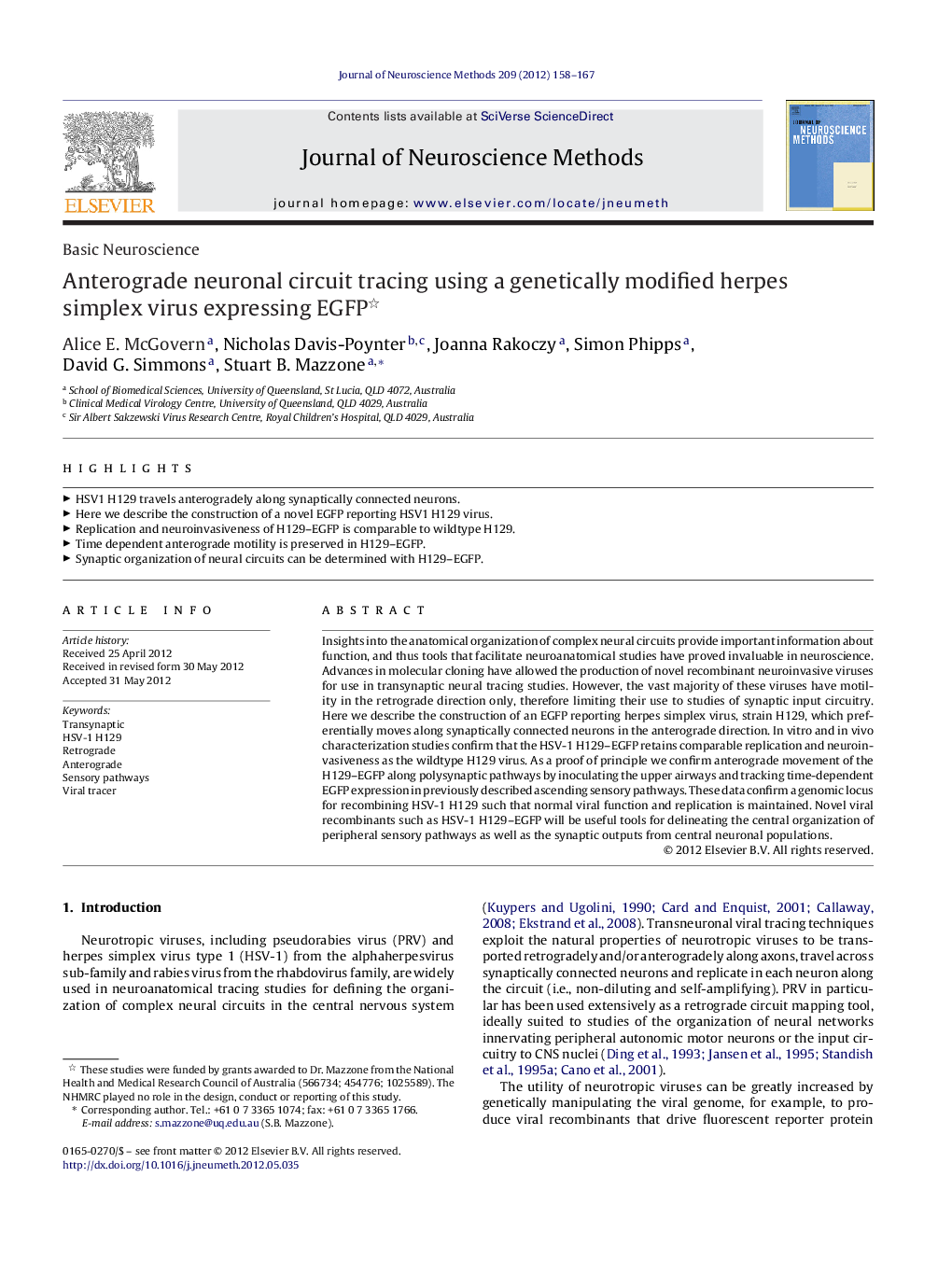| Article ID | Journal | Published Year | Pages | File Type |
|---|---|---|---|---|
| 4335083 | Journal of Neuroscience Methods | 2012 | 10 Pages |
Insights into the anatomical organization of complex neural circuits provide important information about function, and thus tools that facilitate neuroanatomical studies have proved invaluable in neuroscience. Advances in molecular cloning have allowed the production of novel recombinant neuroinvasive viruses for use in transynaptic neural tracing studies. However, the vast majority of these viruses have motility in the retrograde direction only, therefore limiting their use to studies of synaptic input circuitry. Here we describe the construction of an EGFP reporting herpes simplex virus, strain H129, which preferentially moves along synaptically connected neurons in the anterograde direction. In vitro and in vivo characterization studies confirm that the HSV-1 H129–EGFP retains comparable replication and neuroinvasiveness as the wildtype H129 virus. As a proof of principle we confirm anterograde movement of the H129–EGFP along polysynaptic pathways by inoculating the upper airways and tracking time-dependent EGFP expression in previously described ascending sensory pathways. These data confirm a genomic locus for recombining HSV-1 H129 such that normal viral function and replication is maintained. Novel viral recombinants such as HSV-1 H129–EGFP will be useful tools for delineating the central organization of peripheral sensory pathways as well as the synaptic outputs from central neuronal populations.
► HSV1 H129 travels anterogradely along synaptically connected neurons. ► Here we describe the construction of a novel EGFP reporting HSV1 H129 virus. ► Replication and neuroinvasiveness of H129–EGFP is comparable to wildtype H129. ► Time dependent anterograde motility is preserved in H129–EGFP. ► Synaptic organization of neural circuits can be determined with H129–EGFP.
